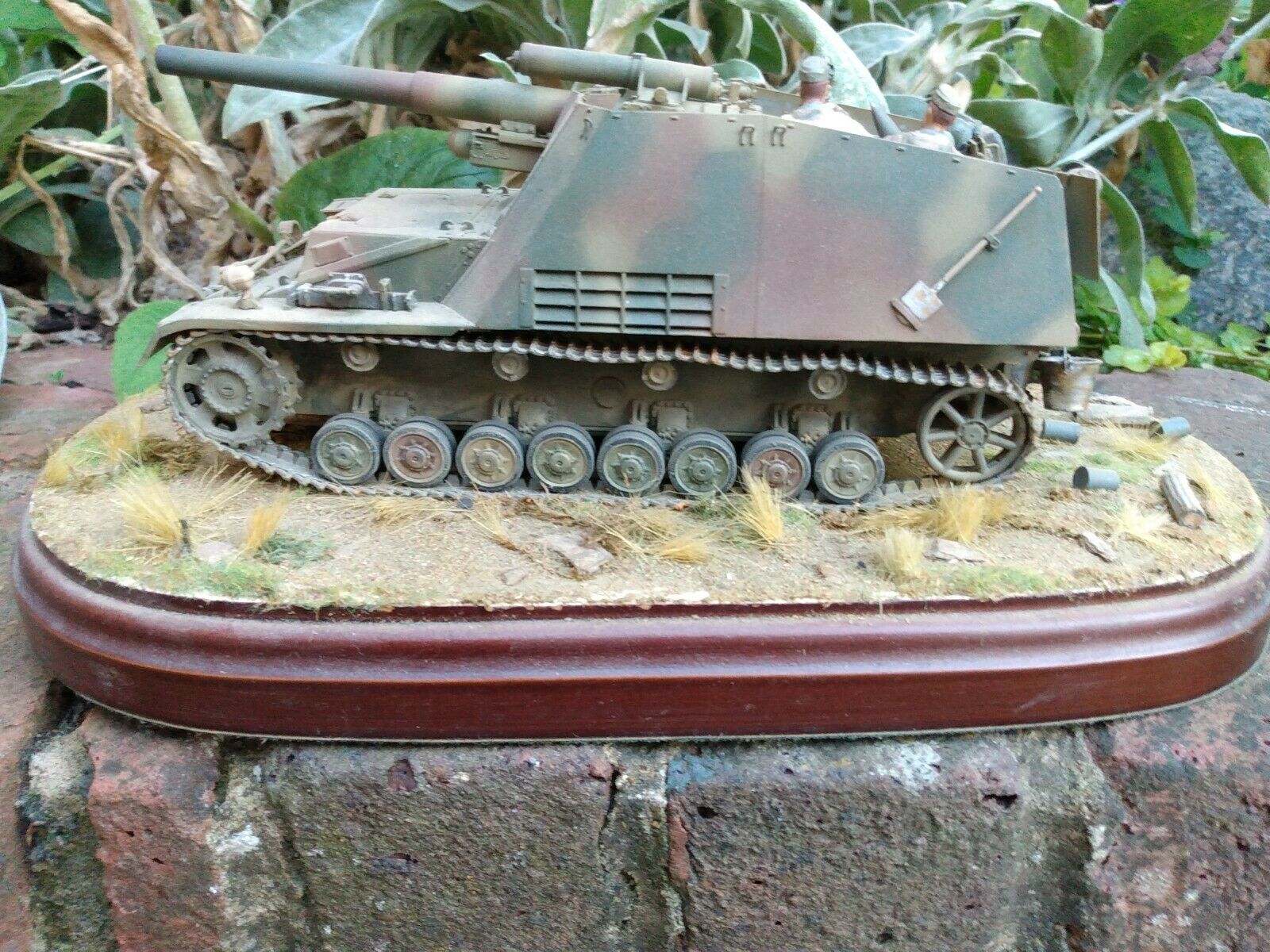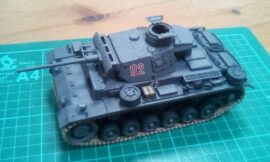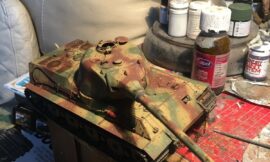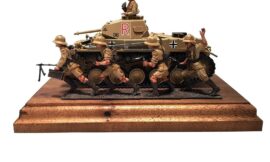The Hummel, often referred to as the “Bumblebee” in English, was a significant piece of German self-propelled artillery developed during World War II. Officially designated as the 15 cm sFH 18/1 auf Geschützwagen III/IV (Sf), the Hummel combined a powerful 15 cm howitzer with a mobile chassis, providing German artillery units with a versatile and effective means of delivering indirect fire support.
Development and Design
The development of the Hummel began in 1942, driven by the need for more mobile and effective artillery solutions on the increasingly fluid battlefields of World War II. Traditional towed artillery had limitations in terms of mobility and vulnerability to enemy fire, particularly during rapid advances or retreats. The German military recognized the necessity of self-propelled artillery that could keep pace with armored and mechanized units.
Alkett and Deutsche Eisenwerke designed the Hummel using a hybrid chassis that combined elements of the Panzer III and Panzer IV tanks. This chassis provided a balance between mobility, armor protection, and the ability to support the heavy 15 cm sFH 18/1 L/30 howitzer. The vehicle featured an open-topped superstructure to accommodate the gun and its crew, which allowed for ease of operation and rapid firing but left the crew exposed to enemy fire and the elements.
Armament and Capabilities
The main armament of the Hummel was the 15 cm sFH 18/1 L/30 howitzer, a powerful and reliable artillery piece capable of firing a variety of ammunition types, including high-explosive, armor-piercing, and smoke rounds. The howitzer had a maximum range of approximately 13 kilometers (8 miles), allowing it to deliver devastating indirect fire from a considerable distance.
The Hummel’s mobility was provided by its Panzer III/IV chassis, which allowed it to traverse rough terrain and keep up with fast-moving armored units. It could reach speeds of up to 42 km/h (26 mph) on roads and had an operational range of about 215 kilometers (134 miles). This mobility enabled it to quickly reposition as needed to support offensive or defensive operations.
The vehicle’s design included storage for 18 rounds of ammunition, necessitating careful logistical planning to ensure a steady supply during prolonged engagements. Additional rounds were often carried by accompanying munitions carriers or supply vehicles.
Operational History
The Hummel first saw action in 1943, during the Battle of Kursk, one of the largest and most intense armored engagements of the war. Its ability to provide heavy artillery support proved invaluable in the dense and chaotic battle conditions. The Hummel was particularly effective in suppressing enemy fortifications, infantry positions, and armored concentrations.
Throughout the war, the Hummel served on both the Eastern and Western Fronts. Its mobility and firepower made it a critical asset in both offensive and defensive operations. However, like many German vehicles of the period, it was produced in limited numbers, with around 700 units built by the end of the war.
Despite its relatively small production run, the Hummel was highly regarded by its crews and commanders for its effectiveness and reliability. It remained in service until the end of the war, often operating in conjunction with other self-propelled artillery and tank destroyer units to provide comprehensive fire support.
Legacy and Impact
The Hummel represented a significant step forward in the development of self-propelled artillery. Its design philosophy, combining heavy firepower with mobility, influenced post-war armored vehicle development and underscored the importance of self-propelled artillery in modern military doctrine.
The lessons learned from the deployment and operational use of the Hummel informed the design of later self-propelled guns and artillery systems used by various militaries around the world. The concept of highly mobile artillery capable of providing rapid and flexible fire support remains a cornerstone of contemporary military strategy.
Conclusion
The Hummel, or “Bumblebee,” was a formidable self-propelled artillery piece that played a crucial role in German military operations during World War II. Its powerful 15 cm howitzer, combined with a mobile and reliable chassis, made it an effective tool for delivering indirect fire support in a wide range of combat situations. Despite being produced in relatively small numbers, the Hummel’s impact on the battlefield and its influence on subsequent military vehicle designs highlight its significance in the history of armored warfare.
4o












